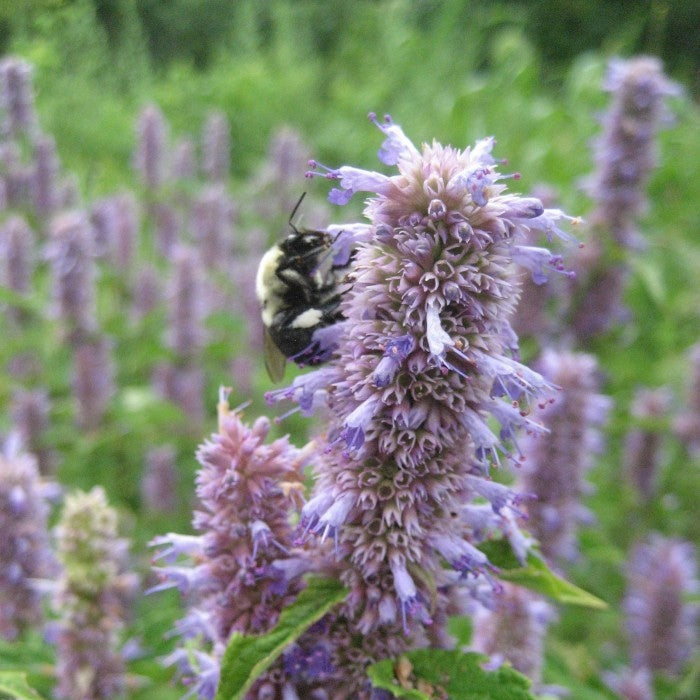1. Lacewings
Both adult lacewings and their larva feast on eggs, larva and adults plant pests, such as aphids and whiteflies. However, the larva, also know as Aphid Lions, are the real predator, so it's important to establish a habit that attracts adults and encourages them to lay eggs. In addition to consuming other bugs, adults feed on nectar and pollen, and are attracted to small nectar rich flowers such as alyssum, cosmos, and dill.
Recommended Varieties:
Good Bug Blooms was formulated with attracting lacewings and includes many of the flowers they like.
Mammoth Long Island Dill is a prolific producer of flowers.
2. Bracanoid Wasp
If you have seen tomato horn worms, you might be familiar with the level of destruction they can do on your tomato plants. It is certainly wise to control them in the garden. However, if you see one with the little white lumps on it, as pictured above, leave it in your garden! Those little white lumps are the cocoons formed by larva of the Bracanoid Wasp, a parasidic wasp that lays its eggs in unsuspecting tomato horn worms. When the eggs hatch, the larva begin feeding on the hornworm, and consume it slowly until it dies and they are mature enough to hatch out.
Like lacewings, adult Bracanoid Wasps also feed on nectar and pollen of small-flowered plants. If you have hornworm issues, attract the bracanoid wasp to your tomato patch by planting the flowers that make them feel at home.
Recommend varieties:
German Chamomile has small and fragrant flowers many garden friends will enjoy.
Catnip isn't just for your feline friends.
Buckwheat this weed suppressing cover crop doubles as a predatory insect attractor.
3. Ground Beetles
This group of carnivorous insect is useful for keeping slugs, caterpillars and Colorado Potato Beetles under control. Encourage their habitat with in your garden by creating undisturbed spaces for them to seek shelter in, such as perennial herb borders and cover crop strips.
In fact, in a recent study with the cover crop buckwheat, it was concluded that planting strips of buckwheat beds between planting of potatoes reduced Colorado Potato Beetle pressure by 90%! Ground Beetles were just one of the species of insect to be attracted to the buckwheat strips. Read more here.
Recommended variety:
Common Buckwheat's tiny yet nectar rich flowers feed and host many beneficial insects.
4. Native Bees
When most people think of saving the bees, the honey bee comes to mind. However, honey bees are a relatively new introduction to North America. Native bees are better pollinators than honey bees, and comprise of diverse class of species, many of which are solitary. To attract these helpful pollinators to your garden, and to assist in conserving their population over honey bees, it is important to plant native species. As mentioned above, create undisturbed zones, some species of bees nest in the ground. For more information, read our Planning for Pollinators article.
Recommended Varieties: Both these mixes have annual and perennial flowers and should be planted in a well prepared, permanent bed.
Anise Hyssop, pictured above.
5. Ladybugs
This cute and recognizable bug is often a symbol of the garden. Though small, this insect is a voracious predator of aphids, eating many times their weight in aphids per day! The biggest way to keep ladybugs around is a constant food source, however none of us wants a constant supply of aphids. Ladybugs also feast on pollen, especially from flowers of plants in the Apiaceae family.
Recommended Varieties:
Cilantro, just be sure to let it flower!








